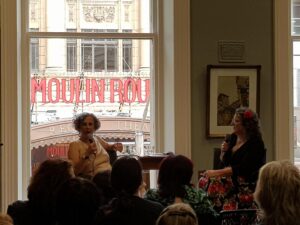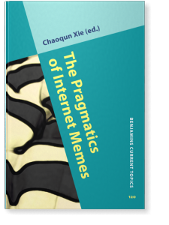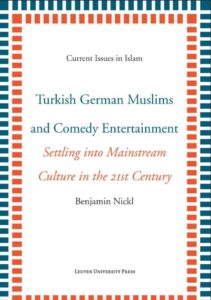Call for Papers AHSN2023.
29th Annual Conference of the Australasian Humour Studies Network
6-7, 9-10 February 2023
The University of Sydney (Abercrombie Business School)
AHSN2023 Theme: A Human Right to Humour

Photo by Charles Etoroma on Unsplash |

Photo by Markus Spiske on Unsplash |
|
The 29th AHSN Conference will take place from 6-7 February (Zoom, online only) and 9-10 February (in-person only) 2023.
To submit a conference proposal, follow this link: https://ahsnhumourstudies.org/abstracts/
The conference will take place in two parts, the first fully online, the second fully in-person. Conference attendees may choose to attend one or both parts (this choice will also be influenced by COVID measures and other factors at the time; different registration fees apply for different types of attendance, e.g., reduced online registration fee).
The theme of the conference is ‘A Human Right to Humour’. Historically one of the best allies to human rights, today, as some point out, humour is also put to oppressive uses. And it has come under fire for that. Arguments revolve around the need to protect marginalised and vulnerable groups. But as demands for censorship and cancellations spread with the lighting speed of viral tweets and online shares, likes, and public outrage, it is worth noting older questions about the intersection of humour and human rights:
-
- Can humour be harmful?
- Does humour have a legitimate place in human rights? What is that place?
- In the face of evil and atrocities as seen the world over, can we ever laugh – or articulate a response other than shock, horror, trauma, and condemnation or outrage?
- Where does, at a strictly human rights level, humour – perhaps even the most unsavoury joke – deserve protection, for it can be helpful to foster critical thinking?
- How do we bring together humour and human rights at a time when the suppression of humour and human rights is on the rise?
- And what do we make of the feeling of being offended, feeling belittled, hurt, or dehumanised, because of humour?
Humour can, and has, aided in the advancement of human rights. Irony, satire, and parody and wit can be instruments of transgression for the powerless to rise up. These devices of humour question social norms, denounce hubris, and shame the oppressors and the ones in power. Whether used by Brecht or Frederick Douglass, it is often artists who use humour to show us the grotesque nature of human rights violations. Caricatures have been made of Stalin and Hitler, challenging their unquestioned authority.
Of course, this is not all. Where else can humour, laughter, joking, and the funny be found and what other roles can they play in debates about human rights and humour as a vital human right?
Panel conveners are searching for authors interested in these broader questions. Papers should, ideally, explore the topic of Humour as a Human Right, including but not limited to different and highly relevant humorous styles, including comedy, satire, irony, as well as humour’s various shapes and forms, including literature, theatre, performance, dance, stand-up comedy, digital humour, etc. in different regional, national, and linguistic and cultural contexts. The impact of humour and the human right to use it on both humourists and their audiences is also a welcome theme. The panel convenors welcome and encourage interdisciplinary and interdisciplinary papers from disciplines engaging in human rights and humour as a human right.
Important Dates:
Submission portal opens 27 May
Submission portal closes 15 July
Submission link: https://ahsnhumourstudies.org/abstracts/
Proposal guidelines:
Proposals should be about 300 words in length. Please add a presentation title above the abstract. Reviewers will check & review all submissions according to certain criteria and may recommend changes & revisions to presenters. All accepted conference abstracts will be published on the AHSN website and the booklet of abstracts leading up to the AHSN 2023 conference. Please see below for more writing guidelines:
-
- Is the question or issue clearly stated in the abstract?
- Is the significance of the work clearly stated in the abstract? Is relevant previous work appropriately cited in the abstract?
- Are relevant references added in a REFERENCES section underneath the abstract? Please note: submissions should aim for a maximum of 5 reference sources.
- If relevant, are the method, data (collection), and analysis procedures well-designed and appropriate to the question addressed in the abstract?
- Is the conceptual framework coherent? If relevant, is the theoretical analysis seemingly sound?
- Is the proposed work original?
- Are the conclusions justified in relation to the data and/or analyses?
- Is the paper timely in terms of current issues of interest in the field of humour and/or associated areas?
- Is the paper likely to be of interest to a reasonable number of attendees at AHSN2023 and to the conference theme?
In case you are not very familiar with the conference abstract genre, there are some general formulas for creating a conference abstract. Here the main points that you need to include:
topic + title + motivation + problem statement + approach + results + conclusions = conference abstract
For all enquiries, please do not hesitate to contact us at: conferenceahsn@gmail.com
AHSN2023 Committee
Ben Nickl, The University of Sydney, Convenor
Rodney Taveira, The University of Sydney
Mark Rolfe, UNSW
Reza Arab, Griffith University
Message from the Chair of the AHSN Board
Dear Fellow AHSN’ers
I was fortunate enough to be at the recent launch of AHSN member (and fellow conference organiser with me for AHSN 2019 at RMIT) Justine Sless’s book Mistress of Mirth’s COMEDY Tour (published by Australian Scholarly Publishing) as part of the recent Melbourne International Comedy Festival.
The event was MC’d by Tasneem Chopra OAM and included comedy sets by Lucy Best and Nicky Barry, who, together with Justine make up the trio “The Goddess Collective”, who appeared in the Comedy Festival with their act Unbridled. The book was launched by author Angela Savage and followed by a conversation between Justine and Angela about the contents.
For anyone who missed out, the book is available for purchase here and it comes with my following recommendation:
Do yourself a favour and get a ticket for Sless’s Comedy Tour. Then strap yourself in and prepare for a wild ride through the world of women’s stand up – from Bakhtin to Bergson via Freud and the Droll Dolls. Prepare to laugh, to cry, to be moved and to be outraged. Above all, let’s count our lucky stars Sless has persevered in her quest to be a comedian and has gifted us this important book. May we all be inspired to create mirthful mutinies!
 |
 |
 |
 |
Kerry Mullan
Assoc. Professor Kerry Mullan
Chair, AHSN Board
School of Global, Urban and Social Studies
RMIT University
Humour Researcher Profile
Julia de Bres, Senior Lecturer in Linguistics, Massey University/Te Kunenga ki Pūrehuroa, Wellington, New Zealand
I am a critical sociolinguist now working at Massey University in Aotearoa New Zealand, having previously spent ten years at the University of Luxembourg. My main research interest is in how language is used to reproduce and challenge social inequalities. I wouldn’t call myself a humour scholar per se, but rather someone who has stumbled upon humour as a key mechanism of discursive control. I have a sense of humour, I promise, but much of my research in this area deconstructs data that at first sight appears to be funny and actually ends up reproducing tired old discourses perpetuating the oppression of minority groups (I know, lol, right?). 
I first looked at humour from this critical perspective when I had just finished my PhD at Victoria University/Te Herenga Waka in 2008, on the topic of attitudes of non-Māori New Zealanders towards the Māori language. I had the opportunity to work there with Janet Holmes, Meredith Marra and Bernadette Vine of the Language in the Workplace Project, to write an article in the Journal of Asian Pacific Communication examining how use of the Māori language by Māori and non-Māori during humorous episodes in workplace interactions functioned to release tension, mark ethnic boundaries, and build in-group solidarity.
I have continued this focus on bicultural humour in two recent projects. One examines New Zealand media responses to the New Zealand accent being voted the sexiest accent in the world in an online poll in 2019. In an article in Te Reo, Sally Akevai Nicholas and I argue that, behind the apparently light-hearted joking about the sexiness or otherwise of the New Zealand accent, the data provides continued evidence of cultural cringe in relation to the New Zealand accent, alongside prejudice towards stigmatised social variation in accent, such as the English spoken by Māori, Pacific and working class New Zealanders. Our research on how university students reacted to stylised New Zealand accents in the media coverage of this event suggested that supposedly humorous accent performances were not so funny for those who were the subject of the joke.
A current project I am undertaking with Isaac Morrison-Young examines the contemporary phenomenon of decolonial Māori memes, created by young urban Māori to advance the project of decolonising Aotearoa. Reaching back to my earlier work on ethnic humour with the Language in the Workplace Project, we distinguish two overarching functional categories in the data we analyse: boundary-marking memes referencingnon-Māori behaviors that perpetuate colonisation, and solidarity-building memes referencing Māori acts of decolonisation. We argue that the humour of these memes has decolonial potential, via both its critique of non-Māori actions and its cultivation of kotahitanga (solidarity) among Māori.
My interests are now extending beyond humour and ethnicity to gender and sexuality. Last year Shelley Dawson and I wrote an article for Gender and Language examining hegemonic discourses of gender, sexuality, ethnicity, class and nation that appeared in artistic and commercial products featuring Ashley Bloomfield, the Director General of Health, during the early stages of the New Zealand government’s COVID response. These products were seeped in humour, but we hold that they also served to reproduce harmful dominant ideologies of hegemonic masculinity, nationalism and colonialism that will linger long after the tongue-in-cheek collective lust for this public servant fades.
It would be hard to get through the day without humour, so I’m all for keeping up the jokes, especially at work. But, as Janet Holmes and I conclude, in a chapter on ethnicity and humour in the workplace in the forthcoming Routledge Handbook of Discourse Analysis, it is through questioning hegemonic norms reproduced via humour that we can move towards creating more inclusive societies for all, where everyone can be in on the joke.
If you are also interested in critical approaches to humour, especially in relation to decolonisation and gender diversity, I’d love to hear from you at j.debres@massey.ac.nz (she/her)
de Bres, Julia and Janet Holmes (fc). Ethnicity and humour in the workplace. In James Paul Gee and Mike Handford (eds.) Routledge Handbook of Discourse Analysis (2ed). London: Routledge.
de Bres, Julia and Shelley Dawson (2021). Saint Ashley: Gendered discourses in the commodification of New Zealand’s Director General of Health during COVID-19. Gender and Language 15,2: 129-157.
de Bres, Julia and Sally Akevai Nicholas (2021). The sexiest accent in the world: linguistic insecurity and prejudice in media coverage of the New Zealand accent. Te Reo 64, 1: 15-32.
de Bres, Julia, Janet Holmes, Meredith Marra, and Bernadette Vine (2010). Kia ora matua: Humour and the Māori language in the workplace. Journal of Asian Pacific Communication 20(1): 46-68.
POST GRADUATE RESEARCHER PROFILE,
DR DEBORAH EDDY, GRIFFITH UNIVERSITY, BRISBANE
Hello from Brisbane. My name is Deborah Eddy, I am an artist and researcher. I very recently achieved my Doctor of Visual Art at Griffith University’s Queensland College of Art campus. My research centred on the invisibility of ageing women through an activist feminist and gerontological lens. Older women are often dismissed as dim witted, feeble, and unedifying. It is important to note however, that older women are carers, volunteers, activists, and those who can get work are employed. Our labour though is largely invisible, and we are the largest growing cohort of the homeless. I am also a grandmother, and it would be remiss of me to not extend my artwork to include climate change. I feel enormously sad that my two grandchildren will suffer the consequences of a warming planet.
The artwork I make uses a methodology known as craftivism. That is craft plus activism. I knit, embroider, weave, and sew sculptures and costumes. I am also a performance artist and I make costumes to perform in.
These performances highlight women’s labour, or comment on climate change. I realised people found my performances funny. It was never something I set out to do but I have embraced it and consequently humour became part of my research. Humour allows me to broach subjects that audiences find unpalatable and they laugh before they realise what my message is but by then I have their attention.
In February this year (2022) I was most fortunate to be one of the AHSN Hobart conference presenters. My paper addressed feminist art and activism, performance art, the gendering of humour and the importance of making ageing women visible. Throughout I shared examples of my artwork. As a feminist researcher and artist humour is an important tool to engage audiences and make them more receptive to my message. Feminists have historically been considered dour and intent on male bashing. I hope I have shown how humour can disabuse this image.
I have spoken at other conferences and my experience with the AHSN cohort was warm, welcoming, and supportive. Additionally, now that I have completed my Doctorate, I have found through the AHSN a supportive network of ECR’s and Post Grads. I am working towards presenting at next year’s conference, this time in collaboration with Dr Beatriz Carbajal.
Please feel free to contact me about my work at Deborah.eddy@griffithuni.edu.au or visit my Instagram Deborah_Eddy_Art.
 |
 |
| Deborah Eddy with her artwork House Dress, 2021. | Deborah Eddy, W is for women’s work, 2021. Photography – Halley Roberts. |
SPECIAL REPORT ON BEATRICE OTTO and her FOOLS AND FOOLERY PROJECT
OVERVIEW: FOOLS ARE EVERYWHERE
How I fell for fools or, no stone unturned
‘Stultorum plena sunt omnia’, said the ancients, or ‘fools are everywhere’, and so it has proved.[1] The fool as a globe-spanning archetype blazed into my consciousness the day I discovered the vivid biographies of court jesters by China’s Herodotus, Sima Qian (145 – c. 86 BCE).[2] Flourishing over 1,500 years before Shakespeare encoded Lear’s fool in our cultural DNA, they were strikingly similar to the Western court jester.[3]
This triggered the idea of comparing Chinese jesters to their English and French counterparts, on the grounds that all three had strong fool traditions and, more subjectively, they happened to be languages I had more or less mastered. And so began five years’ full time research followed by a lifelong gathering of references to fools, in particular (though not exclusively) the court fool or jester.
It didn’t take long to conclude that the initial ‘triumvirate’ was too limiting. Blessed (or afflicted) with an all-or-nothing personality, and seeing the range and richness of the subject, I let the hunt off the leash. In getting hold of a book, paper or thesis, I’d go straight to the bibliography and track down anything relevant I hadn’t already come across. This tentacular approach helped build arguably the most comprehensive multilingual ‘foolography’ yet compiled, enabled by buying red interlibrary loan vouchers, at a pound a piece, by the hundred.
The conclusion half a decade later was that court jesters, usually of humble origins and yet with ready access to the pinnacles of power, were accorded a certain freedom and independence in a range of cultures over thousands of years.
The evidence, in histories, jest-books, plays, stories, letters, memoirs, miscellanies, court accounts and other sources, suggested they were not the product of any particular culture or time, but could appear in different places and periods, providing an alternative or outside perspective inside the loci of power.
In sum, I concluded this was a universal role. This does not mean that it existed in all places at all times, just that it was widely recognised and could exist with a minimal set of conditions including a power structure (‘court’ or some such) with a head honcho (‘king’ or similar), an elite entourage (ministers, nobles, religious or other leaders who might jockey for position), plus a motley crew of musicians, dwarfs, actors, jugglers or bards (itinerant or resident), who could brighten up another boring banquet. It was from this latter pool of hodge-podge skills that a jester could emerge, if they weren’t talent-spotted by the king or a courtier on their travels.
The fool’s licence could rest on a certain liminality which might stem from their humble origins or from various forms of ‘otherness’, physical or mental. This area of otherness is now receiving growing and valuable attention in ‘foolology’, emerging from a range of disciplines including the burgeoning field of Disability Studies.[4]
Dwarfs (and to a lesser extent hunchbacks) are common in stories about fools, and mental otherness or ‘neurodiversity’ was not uncommon in European courts, where it was not unnatural to find ‘naturals’. Feigning folly proved so attractive a prospect that a series of Scottish laws were introduced against it.[5] The status and treatment of dwarfs and jesters in court was often similar, even when they were distinct from one another, and jesters, including Chinese, were frequently dwarfs.
This otherness could quite literally impart a different perspective, allowing them to see things from another angle. Part companion and confidant, comedian and critic, they could be trusted, cossetted, indulged and protected, while also being occasionally punished for the truths they were expected to tell, and at other times (particularly in Europe) almost objectified for their physical differences, like specimens in a human cabinet of curios.[6]
In risu veritas, or many a true word spoken in jest
‘I am a jester, my words cannot give offence.’
So said the Chinese Jester Shi who served a duke in the 7th century BCE.[7] He may be the first named jester on record and this the first mention of the licence to speak freely which is the hallmark of the court fool or jester.[8]
This licence crops up in many cultures, attributed to both the court jester and his cousins among ritual and other clown types. A tantalizing Spanish reference to the Aztec king Montezuma II (1466-1520) tells us that, ‘Sometimes some little humpbacked dwarfs would be present at his meals … These were his jesters’.[9] A later writer adds that Montezuma ‘was entertained with the humorous sayings of some deformed men … He showed much satisfaction in hearing them, and observed that amongst their jests, they frequently pronounced some important truth.’[10]
Sometimes the ruler would have a ‘brilliant’ idea and woe betide anyone who said otherwise. The jester might use humour to bring the ruler round, or try another tack: enthuse about the idea to such a degree that the boss sees its absurdity. A tenth century Chinese emperor was fond of hunting and on one occasion trampled the fields. The local magistrate approached him and on behalf of the farmers, begged him to stop. The emperor was furious and ready to kill him until the jester joined in:
‘“You’re a magistrate,” Newly Polished Mirror shouted accusingly at the magistrate, “And yet you’re actually unaware that the Son of Heaven is fond of hunting, are you? Instead of indulging your peasants’ whims here, letting them plant and harvest grain to provide government taxes, why don’t you let the peasants starve, so that the area is empty of people and available for the Son of Heaven to gallop around hunting in? Your crime merits death!” Then he went up to the emperor and begged that the magistrate be put to death without delay, and all the other jesters chorused their applause. Emperor Zhuangzong burst out laughing, and the magistrate was able to get away, pardoned.’[11]
The 16th century Indian jester Birbal is said to have made up a story, similarly to stop Emperor Akbar trampling the fields while hunting, pretending to listen to a conversation among the birds overhead:
‘“The boy’s father says that the king loves hunting very much. He rides through the fields. He has already damaged many crops. If he does not stop hunting, he will soon ruin many more.” Akbar was very sad when he heard this. “I have not thought of the damage I have been causing, Birbal,” he said. “I have only thought about my own pleasure. I shall never go hunting in the fields again.”‘[12]
Jester Meng served King Zhuang of Chu around the turn of the 6th century BCE, and there are lively accounts of his interventions, including his use of the reductio ad absurdum technique for getting the king to change his mind. Sima Qian’s account also gives us an example of the Chinese term ‘fengjian’, meaning to use humour as an indirect way to remonstrate or advise.[13]
Resilience on legs
An interviewer once asked what attracted me to fools; it was only half in jest that I answered, ‘envy’. Fools have won my affection and admiration for their often apparently fearless and even brazen impulse to say what they want to say, and an accompanying resilience when this hits a raw nerve or happens to be when the boss’s gout is giving him gyp. The truth-telling freedom of fools is widely acknowledged, both in theory and in practice, but that doesn’t mean they always got away with saying anything at any time.
Picture this: there you are, standing before a man (it was usually a man) who rules a world superpower. Say, the emperor of China, tenth century. Remember that time you cracked a joke which involved slapping him across the face? How everyone turned ashen until the emperor laughed at the punch-line and rewarded you?[14]
Yes, you are his jester and your words cannot give offence. Except when they do. This time, your joke enraged him. After all, you basically called him a dog.[15] Now he’s drawn his bow and is about to loose an arrow in your direction.
What do you do? Beg for mercy, or crack another joke? Try a pun on your own name, ‘Newly Polished Mirror’, and the emperor’s reign title ‘Tong Guang’, which sounds like ‘bronze mirror’. Long shot, but give it a go, or you may have only seconds to live.
Phew, His Majesty paused, listened to the pun, laughed and forgave you.[16]
And now?
Sir Humphrey. I’ll keep no Fool, ‘tis out of fashion for great Men to keep Fools.
Fool. Because nowadays they are their own Fools, and so save Charges…
Sir Humphrey. I’ll have none, ‘tis exploded ev’n upon the Stage.
Fool. But for all that Shakespear’s Fools had more Wit than any of the
Wits and Criticks nowadays. (The Woman Captain – 1679)[17]
Court jesters disappeared in different places at different times and for a messy range of reasons. In Europe, they were fading from view by the 18th century, though they could still be found in the private homes of nobles, including in Russia, into the 19th century. Their disappearance may be due to a mix of the development of the theatre, the advent of the Enlightenment with its emphasis on reason sitting uncomfortably with praise of folly, and shifts in how far power was concentrated.
In China, jesters often improvised short skits to make a point, and in some senses this was a form of prototype drama. As theatre developed, something of their truth-telling role could be taken up by actors improvising from the stage – we have a few examples of Qing dynasty actors taking this upon themselves, echoing earlier stage actors of Rome and Greece, not to mention Europe.
That said, I believe the role still exists in different guises. The contemporary court fool can be a comedian or a cartoonist, still wrapping inconvenient truths in a joke. We know of cabaret comedians in Weimar Germany who cracked jokes to question murderous anti-Semitism. Werner Fink had storm-troopers busting in and calling him ‘Jew boy’, which he is alleged to have wryly parried with, `You are mistaken. I only look so intelligent’.[18] Like jesters who overstepped the mark, he paid a price for his sallies, ending up in a concentration camp, though later released on condition he didn’t work for a year.[19]
The striking difference between these latter day jesters and their predecessors is that they don’t have the ear of the powerful people they are criticising and so their barbs are less likely to hit home. In some senses their satire and truth-telling may be aimed more at ‘us’ than at those who lead or purport to lead us. David Low’s cartoons warning that Hitler would trample over Europe (and spineless democracies) were perhaps as much intended to steel us as those acting in our name. Cartoonists also help us not only face up to dangers, but cope with them when they come, as the Swiss cartoonist Chappatte put it:
‘Humour allows us to digest the horror of the world, it’s why we are here, it’s why we are necessary. Society needs it to be able to breathe.’[20]
Initially I wondered if it mattered that the modern day jester speaks his truth to society rather than directly to power, thinking that perhaps if there are other checks and balances, whether institutional, journalistic, or ballot-based, the direct fool-to-king advice might no longer be needed.
Sadly, I’ve concluded that those in power still need them, checks and balances notwithstanding. The Kremlin is currently at the extreme end of the reality warp, but as Robert Reich put it, leaders both corporate and political in what we may still call the ‘free world’, are most likely to blunder because they are not getting accurate feedback from reality:
‘I’ve worked with several presidents. All have made big blunders. I’ve also known and written about CEOs of big corporations who have made terrible mistakes. In every case, they had flawed systems for getting useful, accurate and reliable feedback.’[21]
In our current geopolitical mayhem, with war raging in Ukraine, humour as a compelling means to promote clear-headed recognition of reality may have been lacking where most needed.
‘A sense of humour, after all, is only a sense of proportion and would go a long way to solving the world’s troubles.’[22]
Perhaps no surprise then to hear this articulated by a comedian become leader:
‘Complex mechanisms and political formulations are difficult for humans to grasp. But through humor, it’s easy; it’s a shortcut.’[23]
Humour was such a powerful tool of the truth-telling jester precisely because it is a short-cut through our defences. We get the joke – and the point – before we have chance to put up barriers of prejudice, dislike or self-defence. This may be why a quotation from Umberto Eco’s Name of the Rose serves, to my mind, as a mission statement for fools:
‘Perhaps the mission of those who love mankind is to make people laugh at the truth, to make truth laugh…’[24]
Believing this, I developed the jester’s job description, a template easily tailored to an entity’s needs, published in a respected management journal and available online.[25] Now any enlightened CEO, President or other Big Potato can recruit their own trusted source of honest feedback with a few laughs thrown in for free, and colossal savings in consultancy fees. My only request was that anybody using the template let me know so I could monitor the surge in jester job postings.
A few years on, I can report: no takers.
What a world. While it catches up with the wisdom of fools, allow me to introduce you to the Fools Are Everywhere project.
PROJECT: FOOLS ARE EVERYWHERE
Launched one fine April Fools’ morning, Fools Are Everywhere is building the most sparkling and scholarly global resource on fools and jesters.
Modest ambitions, as you know, never got anybody anywhere.
It draws on thousands of examples in a dozen or so languages, amassed in or since researching the eponymous award-winning book. It includes:
- quotations and stories highlighting the nature of fools and jesters in diverse cultures, currently zooming in on primary sources with secondary sources to follow – this has been the initial focus of the website in order to build content mass
- annotated bibliography of erudite yet engaging studies complemented by a judiciously selected canon of indispensable works
- visual gallery of fools real, imaginary, or both, in what is becoming the world’s first Fooleum; this is drawing on a database already cataloguing hundreds of images
- a polyglot lexicon of fools and foolery
- biographical who’s who as we open ‘dossiers’ – call them The Fool Files – on individual jesters; this builds on the Table of Named Jesters published in the book, developing a database which can be searched by time, place, ruler, or jester, with links to related sources and quotations
- gap map comments – so foolologists can plant fresh seeds in the field – there is a strong need for more translation, particularly of non-European materials, and similarly, a need for more research on non-European traditions, including, among others, Central Asia, Middle East, Turkey, Iran, Japan. Within Europe, those needing more attention include eastern and northern European countries, and Italy and Portugal (Spain has been much better served).
In progress
The current focus is on pumping primary source visual and written material through the pipeline to create critical mass, and to build the online bibliography. The flexibility of a website allows that content to be re-jigged and tagged by:
- source – primary or secondary; book, thesis, paper; painting, sculpture, print etc
- place – region or country
- language – of the original source even if it is featured in translation
- period – century or dynasty
- category – fictive, folk, historical, dramatic or emblematic fools
- names – allowing for a search of specific jesters or the people they served
- other – including gender, disability, or other notable aspects
In the works
As the website and the databases behind it become more densely ‘populated’ with fool findings, we are exploring the most attractive ways to render all this more sleekly searchable, including organising bibliographic and biographic content in timelines, as well as in regional or country specific spaces.
A planned course providing a foundation in Fool Studies is also under development. I would be glad to hear from highly respected institutions with enough interdisciplinary space and budget to host such a course.
A couple of other books are also under development, tackling different aspects of the foolosphere. While my current research is focused on the website, much of it is also ground work for these.
Join the party
One of the joys of launching the Fools Are Everywhere project has been the chance to feature new work on fools emerging from diverse fields: Arabists, art history, archaeology, anthropology (to mention but the ‘A’s).
This has allowed me to connect with people and begin to build a network of scholars with an interest in ‘foolology’, even if tangential to their ‘normal’ research.
This is alongside connecting with a network of performance artists who also have an interest in fools: comedians, clowns, jugglers, story-tellers and … jesters.
If either of these sounds like you, I’d be delighted to hear from you. Please visit Fools Are Everywhere to sign up for regular updates from the cutting edge of ‘foolology’ or drop me a note to be added to the mailing list.
BIOGRAPHY
Beatrice Otto is an independent scholar, a leading ‘foolologist’, author of the award-winning book Fools Are Everywhere, and founder of the Fools Are Everywhere online project.
The website builds on the widely-cited book Fools Are Everywhere: The court jester around the world (Chicago University Press) which demonstrated that the court jester is a universal phenomenon whose job boiled down to making the king laugh and even see sense now and then.
In researching the book, Beatrice pulled together a comprehensive global ‘foolography’, also bringing to light a corpus of classical Chinese sources in a field which was (and remains) somewhat Eurocentric. The book also touched on latter day successors and the continuing need for this sweet-talking candour-seller.
Fools Are Everywhere won the American Association of Publishers’ award for outstanding book of the year in its class (Scholarly Publishing: Language and Literature).
Beatrice is available for interviews and to give lively, illustrated talks on fools and jesters. She now lives in Italy, a historical hotbed of foolery.
CONTACT: beatrice@foolsareeverywhere.com
WEBSITES: foolsareeverywhere.com writingredux.com nuannaarpoq.com spyderceleste.com beatriceotto.com
FOLLOW: Twitter Academia Medium ResearchGate Goodreads
ENDNOTES:
[1] Cicero (106-43 BCE), Epistolae ad Familiares 62-43 BCE (Letters to Friends), IX:12, and quoted by Erasmus (1469-1536), in Praise of Folly, trans. Roger Clarke (Richmond: Oneworld Classics, 2008 (1511)), p. 96. https://www.foolsareeverywhere.com/bibliography-erasmus-folly/
[2] `Guji liezhuan’ 滑稽列傳, in Shiji史記, by Sima Qian司馬遷 (c. 145-86 BC), annot. Pei Yin 裴駰 (Shanghai: Zhonghua Shuju, 1963), vol. 10, fol. 126, pp. 3197-3214. https://www.foolsareeverywhere.com/bibliography-sima-qian-jesters/
[3] A curious difference between China and Europe – in China, people may not ‘get’ the word ‘jester’ when you mention it, but if you give the names of some historical Chinese jesters, they often recognise them immediately. In Europe, most people would be hard put to name a historical jester and their key reference point is Lear – I don’t know how many times someone has asked, ‘Were they really like Lear’s fool?’
[4] A few superb examples, reviewed at Fools Are Everywhere, include: Buhrer, Eliza, ‘“But what is to be said of a fool?” Intellectual disability in medieval thought and culture’, in Mental and Physical Health in the Middle Ages and Early Modern Period, Fundamentals of Medieval and Early Modern Culture, Albrecht Classen, ed. (Berlin & New York: Walter de Gruyter, 2014), pp. 314-43. https://www.foolsareeverywhere.com/bibliography-buhrer-eliza-2014/
Dikici, Ayşe Ezgi, ‘Imperfect Bodies, Perfect Companions? Dwarfs and mutes at the Ottoman court in the sixteenth and seventeenth centuries’, M.A. dissertation, Sabanci University, 2006. https://www.foolsareeverywhere.com/bibliography-ezgi-dikici-ayse-2006/
Secmezsoy-Urquhart, Jessica, ‘Off Evere Full that in this Regeone Duellis: The Neurodiverse Natural Court Fool’s Vital Relationship with Scottish Stewart and British Stuart Rulers, 1488- 1649’, MSc thesis, University of Edinburgh, 2019. https://www.foolsareeverywhere.com/bibliography-secmezsoy-urquhart-2019/
[5] Act for the away-putting of Feynet Fools, 1449 (1450). https://www.foolsareeverywhere.com/quote-laws-against-feigned-fools/
[6] See Brown, Pamela Allen, ‘The Mirror and the Cage: Queens and Dwarfs at the Early Modern Court’, in Historical Affects and the Early Modern Stage, Ronda Arab, Michelle Dowd and Adam Zucker eds. (New York: Routledge, 2015), pp. 137-51 – this draws nuanced parallels between the objectification of court dwarfs and their aristocratic mistresses. https://www.foolsareeverywhere.com/bibliography-brown-p-a-2015/
[7] Jester Shi, court jester to Duke Xian of Jin (r. 677-651 BCE), in ‘Jinyu’ 晉語, fol. 2, in Guoyu 國語 (Discussions of the States) (Shanghai: Shanghai Guji Chubanshe, 1978), 2 vols, fol. 8, 1:286. https://www.foolsareeverywhere.com/story-i-am-a-jester/
[8] There are tantalizing references from ancient Egypt to dwarfs who may have been jesterish, and also of a possible jester profession in Mesopotamia. See Maddalena Rumor, ‘There’s No Fool Like An Old Fool: The Mesopotamian Aluzinnu and its relationship to the Greek alazôn’, Kaskal: Rivista di storia, ambienti e culture del Vicino Oriente Antico, 14 (2017), pp. 187-210. In which case, the earliest jesters could be dated to the 20th century BCE, if not earlier. https://www.foolsareeverywhere.com/bibliography-rumor-maddalena-2017/
[9] Bernal Diaz de Castillo (1492-1591), The Conquest of New Spain, trans. by J.M. Cohen (Harmondsworth, Middlesex: Penguin Books, 1963), p. 227. https://www.foolsareeverywhere.com/quote-dwarf-jesters-aztec/
[10] Francisco Clavigero (1731-87), The History of Mexico, trans. by Charles Cullen, intro. by B. Feldman, facsimile reprint of first edn, 2 vols (London: Robinson, 1787; repr. New York: Garland Publishing, 1979), vol. I, book 5, p. 212.
[11] `Lingguan zhuan’ 伶官傳, in Xin Wudai shi 新五代史 (New History of the Five Dynasties), by Ouyang Xiu歐陽脩 (1007-72) and others, fol. 37, Siku Quanshu四庫全書 (Shanghai: Guji Chubanshe, 1987), vol. 279, p. 229a, trans. by William Dolby. https://www.foolsareeverywhere.com/story-your-crime-merits-death/
[12] Eunice de Souza, All About Birbal (Bombay: IBH Publishing, 1969), pp. 16-20.
[13] See our definition in the fools’ lexicon: https://www.foolsareeverywhere.com/lexicon-chinese-fengjian/
[14] `Lingguan zhuan’ 伶官傳, in Wudai shi 五代史記 (The Historical Records of the Five Dynasties), by Ouyang Xiu歐陽脩 (1007-72) and others, fol. 37, Siku Quanshu四庫全書 (Shanghai: Guji Chubanshe, 1987), vol. 279, p. 229a. https://www.foolsareeverywhere.com/story-so-who-was-asking-for-him/
[15] `Lingguan zhuan’ 伶官傳, in Xin Wudai shi 新五代史 (The Historical Records of the Five Dynasties), by Ouyang Xiu歐陽脩 (1007-72) and others, fol. 37, Siku Quanshu四庫全書 (Shanghai: Guji Chubanshe, 1987), vol. 279, p. 229b. https://www.foolsareeverywhere.com/story-dogging-his-steps/
[16] `Lingguan zhuan’ 伶官傳, in Xin Wudai shi 新五代史 (The Historical Records of the Five Dynasties), by Ouyang Xiu歐陽脩 (1007-72) and others, fol. 37, Siku Quanshu四庫全書 (Shanghai: Guji Chubanshe, 1987), vol. 279, p. 229b. https://www.foolsareeverywhere.com/story-pun-to-commute-a-sentence/
[17] Thomas Shadwell (c. 1642-92), The Woman Captain (1679), in The Complete Works of Thomas Shadwell, Montague Summers, ed., 5 vols (New York: Blom, 1968), vol. 1, p. 20.
[18] E. Larsen, Wit as a Weapon: The Political Joke in History (London: Muller, 1980), p. 39.
[19] Albert Speer, Inside the Third Reich, trans. Richard and Clara Winston (London: Sphere Books, 1971), p. 205.
[20] ‘Spécial Charlie’, Le Temps Samedi Culturel, 10 January 2015, p. 26. https://www.foolsareeverywhere.com/quote-why-we-need-humour/
[21] Robert Reich, ‘Dictators like Putin surround themselves with liars and propaganda. That leads to very bad decisions’, Opinion, The Guardian, 1st April 2022. https://www.foolsareeverywhere.com/quote-why-we-still-need-fools/
[22] Donald Hall, Romanian Furrow (London: Bene Factum Publishing, 2007), p. 97. https://www.foolsareeverywhere.com/quote-humour-and-proportion/
[23] Anne Appelbaum & Jeffrey Goldberg, ‘Liberation without Victory’, The Atlantic, 15th April 2022. https://www.foolsareeverywhere.com/quote-humour-and-survival-i-kyiv/
[24] Umberto Eco, The Name of the Rose, trans. William Weaver (London: Secker and Warburg, 1983; repr. London: Pan Books, 1984), p. 491. https://www.foolsareeverywhere.com/quote-fools-mission-statement/
[25] ‘The court jester is universal, but is he still relevant?’, Management & Organization Review, 11:3 (September 2015), pp. 559-73. https://www.cambridge.org/core/journals/management-and-organization-review/article/court-jester-is-universalbut-is-he-still-relevant/BCFF2C300869B06270C1DFD0A5D49A66
The job description can be viewed here, and I hope you have as much fun reading it as I had writing it: https://www.foolsareeverywhere.com/blog-fools-job-description/
Members’ New Publications
Mark Rolfe. 2022. Election humour 2022: can the major parties win votes with a funny marmot or a joke about Star Wars? The Conversation, 11 May 2022. At: https://theconversation.com/election-humour-2022-can-the-major-parties-win-votes-with-a-funny-marmot-or-a-joke-about-star-wars-182292
Justine Sless. 2022. Mistress of Mirth’s COMEDY Tour. North Melbourne: Aspasia / Australian Scholarly Publishing.
New Book
Chaoqun Xie, ed. 2022. The Pragmatics of Internet Memes. Benjamins Current Topics, No. 120. Amsterdam: John Benjamins. v, 181 pp. + index. ISBN 9789027211361; e-book: ISBN 9789027257642 https://benjamins.com/catalog/bct.120
Expected June 2022.
Publisher’s description: 
What is a meme? What is in a meme? What does ‘living in/with memes’ actually mean? What do memes mean to human beings dwelling in a life-world at once connected and fragmented by the internet and social media? Answers to and ways of answering these and other meme questions that arise in social events represent human assistance in or resistance to meaning making. A pragmatic perspective on internet memes as a way of seeing in social life experience offers a unique window on how meme matters in mediated (inter)actions turn out to be inextricably intertwined with human beings’ presencing and essencing in the life-world. Ultimately, this volume seeks to reveal what and how serious if not unsayable concerns can be concealed behind the seemingly humorous, carefree and colorful carnival of internet memes across cultures, contexts, genres and modalities. This book will be of some value to anyone keen on the dynamics of memes and internet pragmatics and on critical insights that can be garnered in kaleidoscopic multimodal communication. Originally published as special issue of Internet Pragmatics 3:2 (2020).
BOOK REVIEW
Benjamin Nickl. 2021. Turkish German Muslims and Comedy Entertainment: Settling into Mainstream Culture in the 21st Century. Leuven: Leuven University Press. 215 pp. ISBN (Paperback): 9789462702387. ISBN (ePDF): 9789461663412. ISBN (ePUB): 9789461663429. DOI: 10.11116/9789461663412
 Benjamin Nickl’s Turkish German Muslims and Comedy Entertainment: Settling into Mainstream Culture in the 21st Century looks at the use of humour among immigrant communities in Germany where population mobility has a long social, political and economic history and often stirs up uncomfortable public debates. Nickl is tackling this significant topic at a time in which sad historical developments, partly associated with the Middle East and Islam during the last two decades, have provided an excuse for some populists, right-wing extremists and political opportunists to stoke xenophobic and islamophobic fears and prejudices. Such fear-mongering often relies on skewed reasoning and sweeping generalisations that associate certain ethnicities and races with undesirable characteristics, including the lack of a sense of humour and an inability to understand liberal playfulness. Nickl adds nuance to his discussion of the comedy of Turkish German Muslims and its social functions by investigating gender, as well as place of origin or immigrant background, in multiple modalities, including movies, television, literature and online media.
Benjamin Nickl’s Turkish German Muslims and Comedy Entertainment: Settling into Mainstream Culture in the 21st Century looks at the use of humour among immigrant communities in Germany where population mobility has a long social, political and economic history and often stirs up uncomfortable public debates. Nickl is tackling this significant topic at a time in which sad historical developments, partly associated with the Middle East and Islam during the last two decades, have provided an excuse for some populists, right-wing extremists and political opportunists to stoke xenophobic and islamophobic fears and prejudices. Such fear-mongering often relies on skewed reasoning and sweeping generalisations that associate certain ethnicities and races with undesirable characteristics, including the lack of a sense of humour and an inability to understand liberal playfulness. Nickl adds nuance to his discussion of the comedy of Turkish German Muslims and its social functions by investigating gender, as well as place of origin or immigrant background, in multiple modalities, including movies, television, literature and online media.
Nickl argues that humour at the expense of minorities is often perceived as funny when little is known about their lives. In the case of the Turkish community in Germany, many came to the country in the wake of World War II to provide an inexpensive workforce for the booming post-war German economy. But despite their many contributions, they have never been fairly represented in the German culture. Nickl underscores the porousness of German, Turkish and Muslim identities and frankly claims that, like “anti-Semitism, anti-Turkism is one of Germany’s oldest institutionalised hatreds. Both discriminatory practices date back in much of Europe to the early Middle Ages” (45). Although he attempts to trace the historical reasons of othering (or even scapegoating) the Jewish and Turkish communities in Germany, there are major differences between these two types of animosity. For one, anti-Semitic sentiments have never been limited just to one nation-state. Further, the reasons behind the emergence of anti-Turkish sentiments in Germany are hardly on a par with anti-Semitism. Nor are Turkish people the only community identified as Ausländer (alien) or Gastarbeiter (guest worker) in Germany; in fact, in legal developments in 2000 and 2005, avenues to citizenship were finally granted to Turkish immigrant workers.
Chapter one offers an intriguing theoretical discussion of concepts and tropes that commonly play into German and Islamic conceptualisations of national identity. The next five chapters present a series of case studies of Turkish-German humour and comedy in different modes of popular entertainment. Chapter two concentrates on a discussion of four “clash films”, which as the title suggests, largely revolve around “colliding cultures” in Turkish-German cinema (62). The primary contention in this chapter is that members of the Turkish community take pride and joy in self-representation in German cinema. They “reflect through their representation on screen that there is joy in Otherness; that the positioning as Other and a clear-cut identity per nationality is reductive; and that difference and diversity always rest in the eye of the beholder” (63). Though the focus is on German cinema, the discussion opens with a historical survey of the clash film genre in the USA. Chapter three looks at several examples of Turkish-German television series, with the USA again acting as a point of departure. Here, Nickl contends that, the “ethnic sitcom helped German and international audiences to extend the meaning of the wider German family and disprove the myth of cultural normativity” (94). Chapter four concerns two more popular genres, namely Chick-Lit and Dick-Lit and their role in constructing and undoing gender(ed) ethnic and racial identities. This chapter adds nuance to the complex issue of identity construction by considering gender identities among ethnic communities.
Changing the focus to more recent technologies, chapter five investigates Turkish German comedy videos on YouTube. Nickl argues that digital media have provided a place for the counterhegemonic framing of ethnic and cultural diversity by Turkish Germans. Exploring the intersection of gender and ethnic identities, the discussion here integrates user comments to emphasise the interactive nature of this form of comedy as well as the reception of Turkish humour in Germany. In chapter six, Nickl discusses the future of postmigration comedy, following a brief discussion of the (usefulness of the) term ‘postmigration’. He hails recent developments in which even “the most established German satire shows, television companies and cinema comedy productions, and cabaret and local stage play producers, are increasingly more open to all kinds of Germanness and collaborations among the producers of humour related to its attending themes: race, ethnicity, religion, class and gender” (176).
In conclusion, Nickl insists that it is impossible to understand Turkish German humour without understanding popular Muslim comedy in the west. “In 2020,” he observes, “Muslim entertainment comedy increasingly engages the anxiety around Islamic beliefs and the mere presence of Muslims as the reality of being Other in non-Muslim majority countries” (183-184). He cites examples from the UK and Canada to illustrate how comedy engages gender and ethnic clichés and cautions against “the risk of reproducing negative, anti-social messages about ethnic identity and about who may belong to a group and who shall be excluded from it because of religion, gender, sexual orientation or citizenship status” (186).
Turkish German Muslims and Comedy Entertainment tackles a significant topic and its attempts to foster intercultural mutual understanding are laudable. Each chapter opens with a helpful abstract. The writer manages to eschew jargon and complicated theoretical discussions, while he strives to historicise a subset of ethnic humour in twenty-first-century Germany. A minor reservation concerns the mixing of the types and theories of humour. Nickl bases a part of his argumentation on incongruity humour, relief humour and superiority humour as categories. I am not entirely convinced that these three theories of humour (from among others) can be safely translated into a comprehensive and reliable taxonomy. Additionally, some items (like Berger 2010 and 2012 on which the book heavily relies for explaining the theories of humour) seem to be missing from the list of references. Nonetheless, I enjoyed reading the book and would recommend it to anyone keen to learn more about ethnic humour in contemporary Germany. This monograph is currently free to access on the website of Leuven University Press, JSTOR and OAPEN.
Massih Zekavat
Alexander von Humboldt Postdoctoral Fellow
Europa-Universität Flensburg, Germany
Massih.Zekavat@uni-flensburg.de
Reviewer Bionote
 Massih Zekavat is an Alexander von Humboldt Foundation Fellow at Europa-Universität Flensburg, Germany. He is currently working on a book about the use of humour and satire in environmental advocacy for Routledge Environmental Humanities Series. His monograph, Satire, Humor and the Construction of Identities, was published in 2017 by John Benjamins.
Massih Zekavat is an Alexander von Humboldt Foundation Fellow at Europa-Universität Flensburg, Germany. He is currently working on a book about the use of humour and satire in environmental advocacy for Routledge Environmental Humanities Series. His monograph, Satire, Humor and the Construction of Identities, was published in 2017 by John Benjamins.
The Humour Studies DigestThe Australasian Humour Studies Network (AHSN)‘We put the “U” back into “HUMOUR”!’Send your Digest Submissions to our Co-Editors Michael at Michael.meany@newcastle.edu.au or Jessica at Jessica.davis@sydney.edu.au To Subscribe or unsubscribe, visit the AHSN Web site at http://ahsnhumourstudies.org/
|


